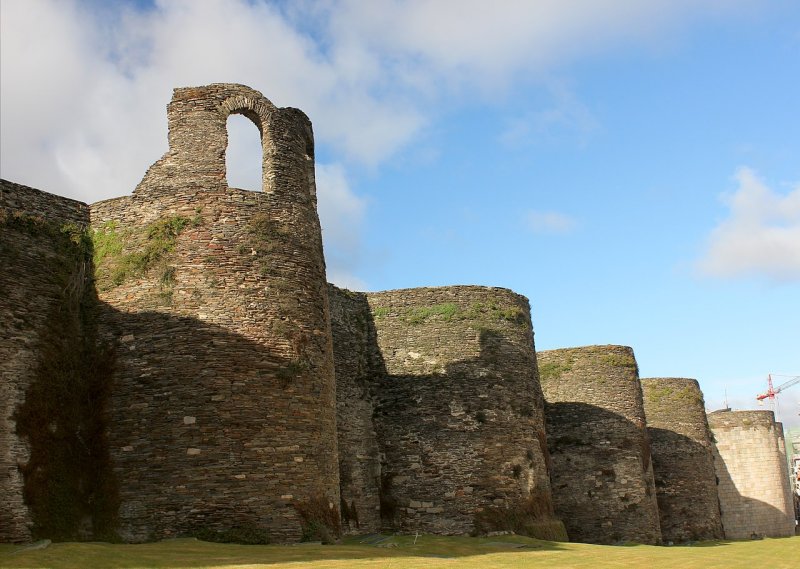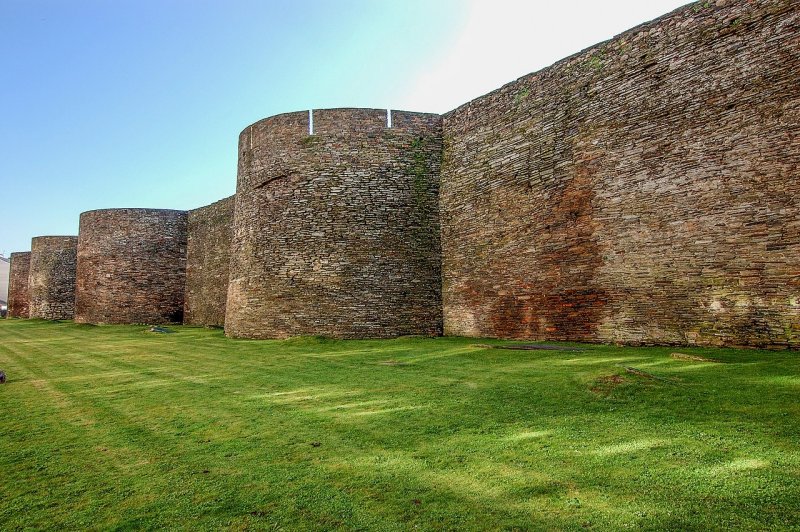Walls Of Lugo: Finest Example Of Late Roman Fortifications – Stands The Test Of Time
A. Sutherland - AncientPages.com - The Roman city walls in Lugo, Spain, are considered the only Roman structure that experienced the powerful empire's domination, yet it is still in perfect condition.
Roman wall of Lugo - Image credit: Xosema - CC BY-SA 4.0
The Lugo structure – dated to the end of the 3rd century - was once part of a defensive complex that included walls, a moat, and an intervallum.
According to UNESCO, the Roman walls of Lugo are 'the finest surviving example of late Roman military fortifications.' We have described on Ancient Pages.com several ancient Roman walls and structures. Still, the Lugo is something extraordinary because the construction of this foundation has survived intact for eighteen centuries.
The structure will stand the test of time even much longer.
The Lugo City Walls are another architectural, archaeological, and constructive accomplishment of Roman engineering, dating from the 3rd and 4th centuries AD.
The Lugo walls - dated from the end of the 3rd century - cover ca. 34.4 hectares, with an impressive perimeter of about 2,120 meters. Its walls are 4.2 meters, and its height ranges from 8 to 12 meters. It was built to defend the Roman city of Lucus Augusti against the barbarian threat.
Roman walls, Lugo, Spain. Image credit: ResearchGate
The ancient Romans' building materials included mortar made from earth, loose stones, and pebbles cemented with water.
The ancient Roman builders' massive and still spectacular work has 71 sections (60 circular and 11 quadrangular) and two-story towers.
The walls still contain 85 external towers, and access to Lugo's interior area is possible through ten gates, five of which were continuously opened from 1853.
Construction of the walls started in 265 AD and was finally completed in 310 AD.
During this period, much of Roman Hispania was threatened by foreign invasion. It is believed, however, that the wall was built to defend the city from revolts by local tribes rather than foreign invaders.
Lugo, Galicia, Spain. Image credit: Rosa Cabecinhas & Alcino Cunha (Rosino) - Flickr
Despite the imposing nature of the Roman Wall, it was damaged on many occasions. In the fifth century, a large group of Germanic peoples (Germanic Suevi) from the Elbe River region in Germany and the Czech Republic invaded Lugo town.
When the Moors invaded Spain, Lugo was ravaged in 714 but was recaptured by Alfonso I of Asturias in 755. Then, in 457, it was invaded by the Visigoths, who captured and settled the town.
Over 200 years later, the Normans again attacked the town in 968, which was restored in the following century.
The Roman city walls in Lugo have a long, dramatic history. They are the finest surviving examples of late Roman military fortifications.
The Walls of Lugo remains an impressive landmark of the Roman-Galician city and its long history that prevails around it.
Written by – A. Sutherland - AncientPages.com Senior Staff Writer
Updated on January 25, 2024
Copyright © AncientPages.com All rights reserved. This material may not be published, broadcast, rewritten or redistributed in whole or part without the express written permission of AncientPages.com
Expand for referencesMore From Ancient Pages
-
 Mysterious Disappearance of Scythians Still Remains Unsolved
Civilizations | Sep 6, 2015
Mysterious Disappearance of Scythians Still Remains Unsolved
Civilizations | Sep 6, 2015 -
 Lhasa’s Potala Palace: Greatest Building In Tibet With History Of 1300 Years
Civilizations | Nov 23, 2018
Lhasa’s Potala Palace: Greatest Building In Tibet With History Of 1300 Years
Civilizations | Nov 23, 2018 -
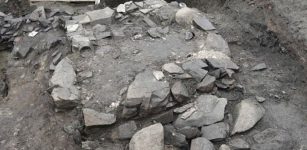 Is A Viking Settlement And Even Older Church Hidden Under St. Clement’s Church In Norway?
Archaeology | Apr 13, 2017
Is A Viking Settlement And Even Older Church Hidden Under St. Clement’s Church In Norway?
Archaeology | Apr 13, 2017 -
 Canopic Jars: Funerary Tradition Of Ancient Egyptians And Their Beliefs In Afterlife
Ancient Traditions And Customs | Jun 23, 2017
Canopic Jars: Funerary Tradition Of Ancient Egyptians And Their Beliefs In Afterlife
Ancient Traditions And Customs | Jun 23, 2017 -
 Archaeologists Have Discovered A Mummy Wrapped In Gold – Here’s What It Tells Us About Ancient Egyptian Beliefs
Featured Stories | Feb 7, 2023
Archaeologists Have Discovered A Mummy Wrapped In Gold – Here’s What It Tells Us About Ancient Egyptian Beliefs
Featured Stories | Feb 7, 2023 -
 New West Papua Findings Provide Insights Into Early Human Migration To The Pacific
Featured Stories | Aug 13, 2024
New West Papua Findings Provide Insights Into Early Human Migration To The Pacific
Featured Stories | Aug 13, 2024 -
 Baffling Archaeological Find At George Washington’s Mount Vernon
Archaeology | Jun 20, 2024
Baffling Archaeological Find At George Washington’s Mount Vernon
Archaeology | Jun 20, 2024 -
 Return Of Pahana – The Lost White Brother Of The Hopi And The Sacred Tablet
Myths & Legends | Mar 5, 2018
Return Of Pahana – The Lost White Brother Of The Hopi And The Sacred Tablet
Myths & Legends | Mar 5, 2018 -
 Confucius: Philosopher, Educationist And Great Intellect With A Noble Morality
Featured Stories | Jul 27, 2016
Confucius: Philosopher, Educationist And Great Intellect With A Noble Morality
Featured Stories | Jul 27, 2016 -
 Sacred Island Ukonsaari Of The Sami People Will Be Respected – Tourism Company Ends Landings On The Island
News | Nov 14, 2019
Sacred Island Ukonsaari Of The Sami People Will Be Respected – Tourism Company Ends Landings On The Island
News | Nov 14, 2019 -
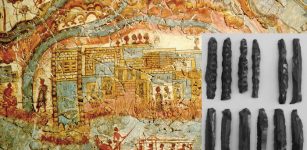 Analysis Of Ancient Tools Challenges Long-Held Ideas About What Drove Major Changes In Ancient Greek Society
Archaeology | Aug 23, 2022
Analysis Of Ancient Tools Challenges Long-Held Ideas About What Drove Major Changes In Ancient Greek Society
Archaeology | Aug 23, 2022 -
 Ji Gong: Legendary Ancient Monk Who Defended People Against Injustice
Chinese Mythology | Jan 31, 2016
Ji Gong: Legendary Ancient Monk Who Defended People Against Injustice
Chinese Mythology | Jan 31, 2016 -
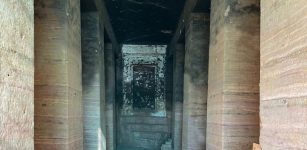 Egypt’s Oldest Tomb Oriented To Winter Solstice Discovered In Aswan
Archaeology | Nov 18, 2022
Egypt’s Oldest Tomb Oriented To Winter Solstice Discovered In Aswan
Archaeology | Nov 18, 2022 -
 500 Million Year-Old Fossils Solve A Centuries-Old Evolutionary Riddle
Archaeology | Nov 7, 2022
500 Million Year-Old Fossils Solve A Centuries-Old Evolutionary Riddle
Archaeology | Nov 7, 2022 -
 Largest Figurine Workshop Yet Discovered In The Maya World
Archaeology | Apr 30, 2019
Largest Figurine Workshop Yet Discovered In The Maya World
Archaeology | Apr 30, 2019 -
 World’s Oldest Lunisolar Calendar May Have Been Discovered At Göbekli Tepe, Turkey
Archaeology | Aug 7, 2024
World’s Oldest Lunisolar Calendar May Have Been Discovered At Göbekli Tepe, Turkey
Archaeology | Aug 7, 2024 -
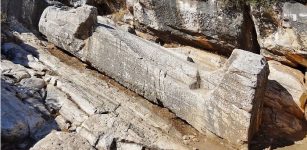 Enigma Of Giant Statue Of Kouros Of Apollonas
Featured Stories | Jul 18, 2019
Enigma Of Giant Statue Of Kouros Of Apollonas
Featured Stories | Jul 18, 2019 -
 Hidden Story Of The Sacred Wiradjuri Carved Trees Revealed
Archaeology | Nov 28, 2023
Hidden Story Of The Sacred Wiradjuri Carved Trees Revealed
Archaeology | Nov 28, 2023 -
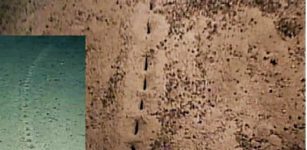 Who Or What Made These Mysterious Holes At The Bottom Of The Atlantic Ocean?
News | Mar 23, 2023
Who Or What Made These Mysterious Holes At The Bottom Of The Atlantic Ocean?
News | Mar 23, 2023 -
 Evidence Foreigners Fought Alongside Ancient Greeks Is Challenging Millennia Of Military History
Featured Stories | Jun 1, 2022
Evidence Foreigners Fought Alongside Ancient Greeks Is Challenging Millennia Of Military History
Featured Stories | Jun 1, 2022

